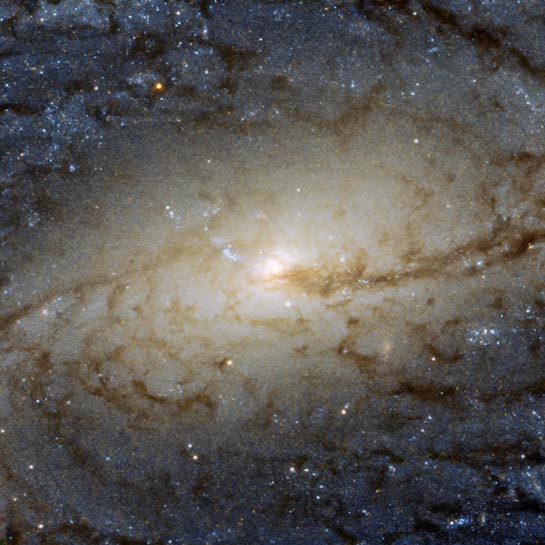
Spiral Galaxy
RA 11h 47m 4.56s Dec -16° 51' 16.62"
Crater
70 million light years
10.6
4.95 by 3.3 arcmin
0.64 x 0.67 arcminutes
North is 74.6° right of vertical
ESA/Hubble & NASA, P. Erwin et al.
March 2, 2020
ABOUT
THIS IMAGE:
The central region of the barred spiral galaxy NGC 3887, seen here as viewed by the Wide Field Camera 3 aboard the NASA/ESA Hubble Space Telescope, lies over 60 million light-years away from us in the southern constellation of Crater (The Cup). It was discovered on December 31, 1785 by the German/British astronomer William Herschel.
Its orientation to us, while not exactly face-on, allows us to see NGC 3887's spiral arms and central bulge in detail, making it an ideal target for studying a spiral galaxy's winding arms and the stars within them.
The
very existence of spiral arms was for a long time a problem for astronomers.
The arms emanate from a spinning core and should therefore become wound
up ever more tightly, causing them to eventually disappear after a (cosmologically)
short amount of time. It was only in the 1960s that astronomers came up
with the solution to this winding problem; rather than behaving like rigid
structures, spiral arms are in fact areas of greater density in a galaxy's
disc, with dynamics similar to those of a traffic jam. The density of
cars moving through a traffic jam increases at the center of the jam,
where they move more slowly. Spiral arms function in a similar way; as
gas and dust move through the density waves they become compressed and
linger, before moving out of them again.